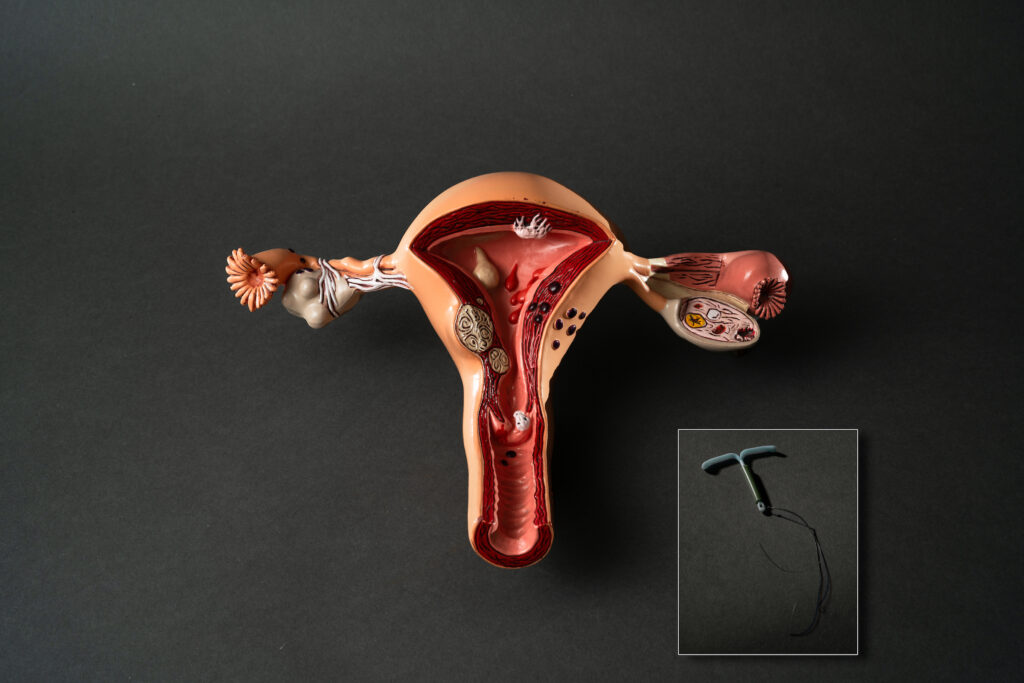Does an IUD fitting hurt?
A social media trend is highlighting the lack of pain management during IUD insertion. So why isn’t pain relief offered in some cases, and what can be done to reduce discomfort?
IUD insertion pain in the spotlight
In recent months, Tiktok users have been posting videos of their faces contorting in pain as they have an IUD (Intrauterine Contraceptive Device) inserted. The popularity of these videos has opened up conversations about the lack of pain relief offered during these procedures, with many calling this a symptom of the Gender Pain Gap, where women’s pain is not taken as seriously or treated as efficiently as that experienced by men.
Why get an IUD?
While this social media trend may ultimately help to improve care for women, there is a risk that many are being put off from using an IUD after seeing these videos. Some influencers are even strongly recommending against IUDs and suggesting women go for other forms of contraception, like the pill or Depo Provera injection. But everyone is different – in terms of pain thresholds, and also in terms of lifestyle. A contraceptive method that suits one person may not suit another, and lots of people try a few methods before landing on the right one. With so many options available to women now, it’s important that people talk through their own personal situation with a GP or gynaecologist to find the contraceptive that best suits them.
A hormonal IUD device can be incredibly helpful for more than just contraception, since it was originally developed to treat menses-related issues. The controlled delivery of progestogen (a synthetic form of progesterone) can help with menses-related issues such as heavy, painful or prolonged periods because it reduces the growth of the uterine lining. Due to this effect it can also be used in the management of endometriosis.
A hormonal IUD is also an excellent form of ‘fit and forget’ contraception, allowing women sexual freedom without the risk of pregnancy. They will not protect a person from sexually transmitted infections, though. A barrier contraceptive (oral dams or condoms) should be used for protection from STIs.

Anxiety from the expectation of pain can also increase pain receptors, which is why many medical professionals consider the virality of those social media videos to be damaging.
How does an IUD work?
In New Zealand, there are two types of hormonal IUDs available, called the Mirena® and Jaydess®. They work by releasing tiny amounts of progestogen over time, which thickens the mucus in the cervix and prevents sperm from getting to the ovaries. They are effective immediately after being fitted and can stay in place for 3-5 years.
There is also a non-hormonal IUD –the copper IUD. It releases tiny copper ions into the uterus that make the environment repellent to sperm.
How bad is the pain during an IUD fitting?
Pain from an IUD insertion can vary from mild cramping to severe pain, with some women also experiencing nausea and vomiting as a result of the procedure. Pain is often worse for those who have never given birth.
Anxiety from the expectation of pain can also increase pain receptors, which is why many medical professionals consider the virality of those social media videos to be damaging.
However, while it’s true that for many people, the pain will be entirely manageable with paracetamol and ibuprofen, that doesn’t discount the suffering of those who experience it at the other end of the spectrum.
What pain relief is available?
There are many ways a gynaecologist can make the procedure less painful. COGA’s specialist gynaecologists fit a huge number of IUDs and now run training sessions for Canterbury GPs to demonstrate ways of making an IUD fitting as comfortable as possible.
At the simplest level, using a proper lithotomy bed (the ones with stirrups) helps to get the pelvis positioned correctly for a more comfortable insertion. Misoprostol can be used to soften and dilate the cervix and that can reduce pain. A local anaesthetic will numb the entry to the cervix, reducing discomfort, and in some clinics, Penthrox is an option for stronger pain relief.
Having it fitted under general anaesthetic is also an option for people who are very anxious about the procedure, or for those who have never had penetrative sex before. There is a cost and time element associated with this option but many find it a preferable way to ensure this long-acting contraceptive is fitted in a less confronting or pain-free way.
If you are anxious about the procedure or have experienced a painful procedure before – or even if you just want to understand the steps to fit an IUD – we welcome you to make a familiarisation appointment to find out more about it.
- Fertility
- Fertility
- Menopause
- Gynaecological Services
- Contraception
- Gynaecological Services










